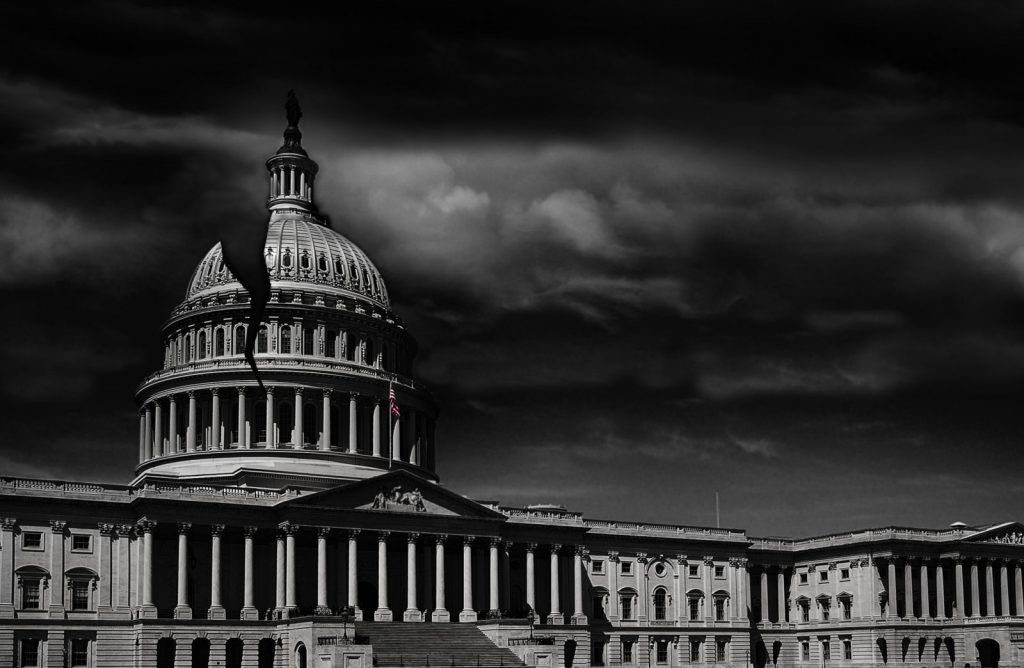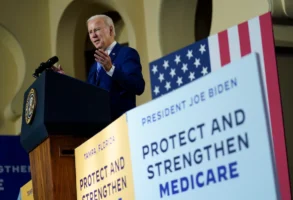
Published November 12, 2018
Last week’s midterms look like a strong Democratic victory. Democrats have gained seven governorships, a minimum of 32 House seats (and more likely closer to 40), and hundreds of state legislative seats. To all appearances, they look to have swept the nation and put Donald Trump and the Republicans on the ropes.
But that’s assuming there was a nation to sweep. In fact, a close look at the returns show that the US is really two very separate nations, with two very different election verdicts to be read. On that view, the election actually contains very positive news for Trump’s re-election hopes.
The first nation, the US’s large cities and suburbs, was Democratic before last week and became much more Democratic on Tuesday. A whopping 30 of the Democrats’ 32 current House pickups came in seats dominated by large cities or their suburbs. The second, 0the US’s smaller cities and towns and countryside, was Republican before last week and remained Republican on Tuesday. Both seats picked up by House Republicans, Minnesota’s first and eighth districts, are dominated by the small cities of Rochester and Duluth and rural territory beyond.
This split decision can be seen in the county-level returns in the contested Senate races. In each, we can compare the Democratic percentage in 2012 with that in 2018. In Indiana, Missouri, and North Dakota – all states where incumbent Democrats were defeated – the state’s major cities and suburbs backed the Democrat by enough compared with six years earlier to allow the incumbent to win. But the story was different in the small city and rural counties. There the Democrats’ vote share collapsed, giving the incumbents’ Republican challengers more than enough votes to win comfortably.
This pattern was repeated in states that Democrats won, too. In Montana, incumbent Democrat Jon Tester won by 3%, slightly less than his 4% win in 2012. He improved his margin in four large counties that cast nearly 40% of the vote – Missoula, Gallatin, Flathead, and Lewis and Clark – by between 3% and 13%. His margin dropped by only 5% in the three other large counties – Yellowstone, Cascade, and Ravalli – that cast another quarter of the total vote. He nearly lost, however, because his margin plummeted in the state’s smaller counties that the other third of the vote by as much as 15%.
Democrat Kyrsten Sinema’s apparent victory in Arizona is entirely due to her performance in the state’s primary metro area, Phoenix. Sinema is currently ahead in Phoenix’s Maricopa County, the first Democrat to carry that county in a contested Senate or gubernatorial race in decades. She is also running about as well as the Democratic Senate candidate six years ago, Richard Carmona, in the next two largest counties. Her Republican opponent, Martha McSally, is significantly outpacing the 2012 margins of the man she is trying to replace, Jeff Flake, in the more rural counties of Mojave, Cochise, and Pinal. But unlike her peers in the Midwest, Arizona is dominated by its cities rather than the countryside.
This divide extends to the old rust belt industrial counties as well. Indiana’s Joe Donnelly carried four traditionally Democratic counties in the state’s north-west by large margins in 2012. He carried them again in 2018, but by 62,100 fewer votes than six years earlier. The same thing happened in neighboring Ohio. Democrat Sherrod Brown won his re-election by a much narrower than the forecast 6%. One reason for that was dramatically smaller margins than he had received six years ago in the depressed rust belt counties in the state’s north-east, where his victory margins decline by between 8% and 16%. In both cases, these regions were places where Donald Trump surged in 2016.
These divides provide an overlooked silver lining for Trump. The large majority of Trump Democrats voted for their hero’s new party even though he was not on the ballot. One can reasonably presume they will come out in greater numbers and provide larger margins for the man himself two years hence. That suggests that Trump will again be competitive in the Midwestern purple states of Ohio, Michigan, Iowa, and Wisconsin, and perhaps even Pennsylvania where two weak candidates this cycle depressed GOP vote share. Should Trump be able to improve only a small amount on his party’s 2018 results in these states, he will again prevail in the Electoral College even as he again loses the popular vote.
The Democrats’ suburban swing, meanwhile, won’t likely move any state in their direction. They fell short in Georgia, Texas, and Florida and only narrowly prevailed in Arizona. As with the Midwest, only the tiniest of improvements over the GOP performance in these states will permit Trump to prevail.
Benjamin Disraeli, the great 19th century British prime minister, spoke of his country’s divide in his novel, Sybil. He spoke of a country divided between rich and poor, but otherwise his description fits America’s class and urban divides. Like in Disraeli’s Britain, we have: “Two nations between whom there is no intercourse and no sympathy; who are as ignorant of each other’s habits, thoughts, and feelings, as if they were dwellers in different zones, or inhabitants of different planets.”
The midterms show that our two nations have even less in common with one another than they did in 2016. Until that divide is breached, by Trump or his Democratic opponent, our elections will continue to deliver split verdicts and do more to separate than unite Americans.
Henry Olsen is a senior fellow at the Ethics and Public Policy Center and he studies and provides commentary on American politics








